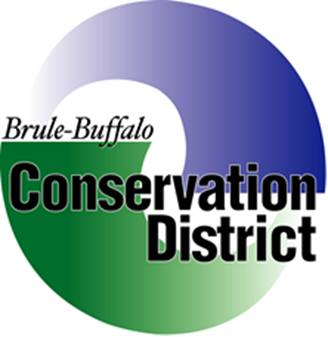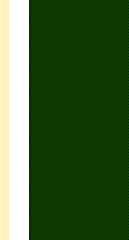





Inventory Available:
Shrubs
Black Chokeberry – Attractive white flowers, glossy foliage and black berries. Edible fruit attracts birds. Excellent fall color.
Buffaloberry - Native. Suckers to form colony. Drought tolerant. Attractive silver leaves. Red fruit can be used for jelly.
Caragana – Drought hardy, fine leafed, yellow flowers, non-edible pods.
Cherry, Nanking – Showy flowers and sweet red fruit. Good for jelly. Good for wildlife.
Cherry, Mongolian – Glossy leaves. Showy white flowers and tart red fruit. Excellent for jelly.
Chokecherry – White flowers, blooms late April, fruits used in jams.
Cotoneaster – Glossy green leaves, non-edible fruit, ideal for hedges
Cranberry, Highbush – Attractive white flowers and red fruit. Excellent fall color. Fruit could be used for jelly. Prefers moist soil
Current, Amercian Black – Grows in flood plains and occasionally in open area. Edible fruits used by birds & animals.
Dogwood, Red stemmed – Provides good winter color, tolerate wetter soils, white flowers.
False Indigo – Native shrub, purple flowers, grows in wetter soils, bears fruit.
Honeysuckle – Fragrant white, pink or red flowers. Inedible red or orange fruit attracts birds.
Juneberry – Native shrub, white flowers, edible blueberry like fruit
Lilac, Common – Dense suckering growth, white to mostly purple flowers
Lilac, Villosa– Non-suckering, rosy-lilac to white flowers are larger than common lilac
Nannyberry, Viburnum – Native, shiny leaves, white flowers followed by black fruit. Excellent fall color. Can be trained to a single-stemmed small tree.
Plum , American – Native shrub, fast growing, white flowers in spring. Edible fruit makes good jam.
Rose, Hansen Hedge – Fragrant pink flowers in June, bright red-orange fruit in fall attracts wildlife. Thorns, suckering plant
Sumac, Smooth – Native, suckers to form colony, excellent red fall color, red seed-heads add winter interest. Moderate drought tolerant
Willow , Sandbar – Ideal for moist soils, bark reddish-brown turning gray
Medium Trees
Apricot – Early flowering, some trees produce edible fruit
Chokecherry, Amur – Mid-May white flowers, dense branching tree, orange bark
Crabapple, Midwest – White fragrant flowers, bright red or yellow fruit
Hawthorn – White flowers followed by reddish fruit in late summer
Maple, Amur – Brilliant red fall color, commonly called ginnala maple. Prefers moist well-drained soil.
Pear, Harbin – Hardy slow growing tree, does well in droughty soils
Willow , Laurel Leaf – Beautiful glossy green leaves, does well in wetter soils
Large Trees
Ash, Green –Native, fast-growing. Yellow fall color
Cherry, Black – Native in Eastern US forests. Fast growing tree produces attractive white flowers and dark fruit. Fruit makes syrup and drinks.
Cottonwood , Seedless – Fast growing. Cottonless. Needs moist, well-drained soil for best growth
Hackberry – Hardy, good shade tree, drought tolerant
Honeylocust – Fine lacey looking leaves, may produce long brown seed pods. May produce thorns. Tough and adaptable
Linden , Little Leaf – Pyramidal growth habit. Attractive white flowers in June. Prefers moist well-drained soils
Maple, Silver – Fast growing, yellow fall color, brittle wood. Prefers moist soil
Maple, Sugar – Native to NE SD. Brilliant red, yellow and orange fall color. Excellent shade tree.
Oak, Bur – Native. Extremely tough, drought tolerant tree. Long-lived. Acorns provide wildlife food.
Walnut, Black – Native in SE SD. Valuable lumber tree Edible nuts. Attracts wildlife. Grows best in deep, moist soils.
Willow , Golden – Fast growing. Tolerates wet sites. Not drought tolerant. Attractive golden-orange bark adds winter interest.
Conifers
Pine, Austrian– Slower growing than other pines, stiff needles
Pine, Ponderosa – Native. Fast-growing once established. Good wildlife plant. Drought tolerant (intolerant of wet soils)
Pine, Scotch – Attractive peeling orange bark on older trees. Drought tolerant. Popular Christmas tree. Fast growing.
Red Cedar, Eastern – Medium Conifer. Native. Very drought tolerant. Has reddish brown to purple winter color. Excellent for wildlife
Spruce, Black Hills – SD State tree. Very ornamental. Dense growth habit. Drought and alkaline tolerant. Cones attract songbirds.
Spruce, Colorado Blue – Native in Rocky Mountain states. Needles blue or green. Very ornamental.
Spruce , Norway – Native to Europe. Green needles. Large cones, ascending branches with drooping branches.
Spruce, Meyer -Very similar to Colorado Spruce but with more consistently blue needles. Needles not as stiff and sharp.
To learn more about the trees/shrubs please go to the North Dakota Tree Handbook web site.
Site Developed and Maintained By Brule-Buffalo Cons. Dist.
MAS Media























